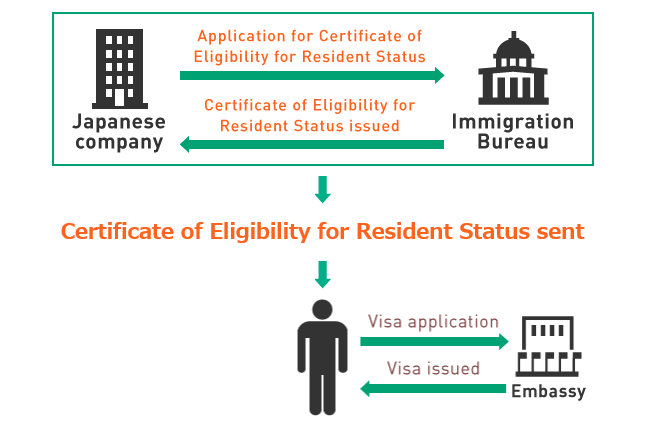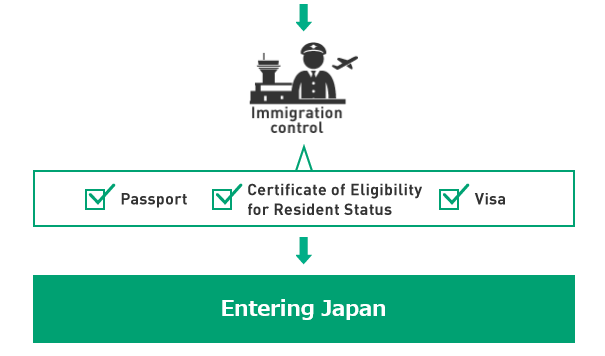STEP 4 Preparation for Work in Japan①
WORK’IN JAPAN
30.07.2018
Hello everyone!
This is Step 4 for the five steps to working in Japan!
Today, let us explain the process which you need to know after you got a job in Japan. If you understand how to enter Japan well, your Japanese working life goes smoothly!
Before coming to Japan, of course you need to obtain a “visa”. However, it is not enough if you stay in Japan for a long term. You need to be approved the eligibility for one of Status of Residence to reside in Japan by applying Certificate of Eligibility at Immigration Office. In addition, you’ll get “a residential card” after these processes.
1.Procedures for living and working in Japan
At first, let us explain specifically about the procedures to get a visa and Certificates of Eligibility for Resident Status.


① Apply for a visa in your country
First, you need to present your Certificate of Eligibility for Resident Status at a local Japanese embassy or consulate and undertake a visa application to acquire a visa. If your family will be accompanying you to Japan, they will also need visas and Status of Residence documents, so you should ask your prospective employer to undertake the appropriate procedures to acquire Certificates of Eligibility for Resident Status.
② Your employer send your “Certificate of Eligibility for Resident Status”
If you are a non-Japanese person living overseas, your prospective employer in Japan will apply for and acquire a Certificate of Eligibility for Resident Status on your behalf, and will send it to you.
③ Receive an approval at immigration control
When entering Japan, if you present your passport and visa at immigration control at the airport and show your Certificate of Eligibility for Resident Status, you will receive a stamp in your passport approving entry to the country. You will also be able to acquire a Residence Card there.
2. Understand each roll for your stay
Q.What is Status of Residence?
A. Generally, non-Japanese people who enter and reside in Japan receive permission to land at the port of entry in accordance with their Status of Residence determined at that time, and are thus able to stay in Japan. The Status of Residence determines the range of activities permitted to non-Japanese citizens during their stay in Japan. Basically, non-Japanese are prohibited from earning income other than from the activities approved by their Status of Residence.
The Status of Residence for working non-Japanese people newly employed by a Japanese company is determined by the type of work they will be doing. For example, in many cases this is “Engineer/Specialist in humanities/International services,” but it might be “Legal/Accounting services” for a legal or accounting office or “Researcher” for a research institution.
The permitted period is specified for each status of residence. A foreign national may engage in activities within the scope of the status of residence and period of stay permitted to him/her. The list of Status of residence and term of residence is as follows.
-List of statuses of residence http://www.immi-moj.go.jp/english/tetuduki/kanri/qaq5.html
Your prospective employer will apply for your Status of Residence at the Immigration Bureau in Japan, but the application documentation varies depending on the size of the company and some companies are not familiar with the application procedures, so you should check for yourself the types of documents required, and be sure to keep in contact with your new employer.
Q.What is VISA?
A. From when you commence the application procedures it might take 2 or 3 months to receive your visa, but you should use this time to undertake resignation procedures with your previous employer and prepare for coming to Tokyo.
Conclusion
This time, we talked about preparation for entering Japan. It looks complicated when we try to understand the process but preparation for it will help you for your fun life in Japan a lot!
We will talk about more practical preparation which you should know in your real life in Japan next time. See you soon!








